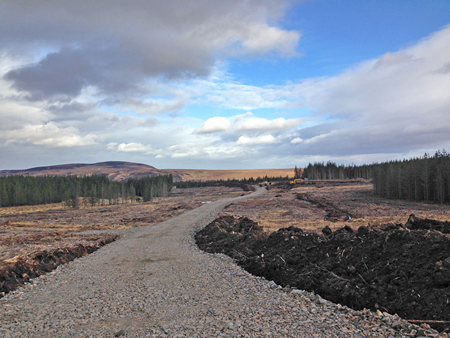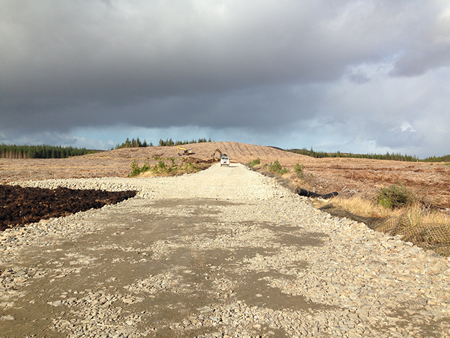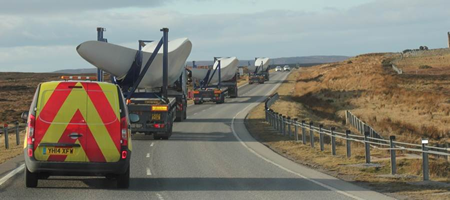


Nearly 100,000m2 of geogrids have been utilized in the wide-scale stabilization of site access roads for the North Strathy Wind Farm in the Scottish Highlands. Situated near Strathy on the north coast in Sutherland, more than 18km of access roads have been installed to construction and long-term access to the 33 turbines.
The Scottish ministries approved the 68 MW development in 2011, and in 2013 civil engineering contractor RJ McLeod began to orchestrate the site preparation necessities with SSE, the diverse energy group overseeing the wind farm.
provided mechanical stabilisation in challenging areas of soft ground.
Tensar supplied the project with nearly 100,000m² of TriAx® geogrids to satisfy the significant mechanical stabilization needs of the remote installation.
Wind energy has scaled up quickly around the world, and global capacity is expected to nearly double by the end of 2020. With this vast adoption of wind turbines has come significant technology advances in turbine size and output. The end result is the need for significantly more reinforcement materials to make site construction economical and, in many regions, possible.
SSE Renewables is using a combination of TriAx® TX190L and TX160 geogrids at North Strathy.
Placed directly on the subgrade, the geogrids interlock with and confine the granular fill material, allowing reduced thicknesses of aggregate to be used while cutting the level of excavation required. This lowers construction times and costs.
The bearing capacity of site access roads is deeply important to the efficiency of the operation and the cost of the construction. The heavy cranes needed for lifting the large turbine components into place must move from turbine pad to turbine pad. If site roads can be construction in such a way that cranes will not need to leave the site in order to be used at each turbine point, then construction is considerably faster. If public roads must be used, the massive cranes generally must be disassembled and special permitting may be required in order to use the public roads between turbines.
Also, in using geogrid reinforcement, less aggregate is needed to be transported in and heavier loads (construction and turbine equipment) can be brought in. These aspects reduce the CO₂ emissions affiliated with the engineering works.
“In addition to allowing the creation of a safe, stable access route, by using TriAx® geogrids we could also reduce the project’s overall costs, and environmental impact,” said Ryan MacLean at RJ McLeod.
Drew McCartney, Tensar’s Area Civil Engineer for Scotland, agreed. “It’s an honour to have been appointed to such a significant energy project and we look forward to working with R J McLeod in the future,” he said.
Site preparation advanced through 2013 and 2014. Turbine deliveries began in February 2015 and will continue into the summer. The site is scheduled to be fully operational by the end of the year.
**
For more information on Tensar’s work on wind farm projects, visit http://www.tensar.co.uk/Market-Sector/Utilities-and-Energy/Wind-farms











